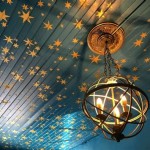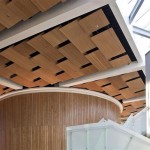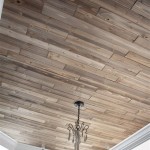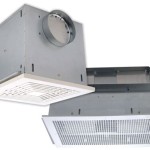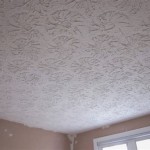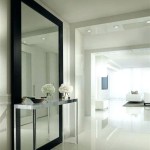Choose The Right Kitchen Ceiling Paint For Perfect Looks In Germany
The kitchen ceiling is often overlooked during a renovation or redecoration project. However, its impact on the overall aesthetic and functionality of the kitchen should not be underestimated. In Germany, where design sensibility often prioritizes both form and function, selecting the right paint for the kitchen ceiling is a crucial step. Factors such as humidity, cooking fumes, and lighting all play a role in determining the optimal paint solution. This article will delve into the various considerations when choosing kitchen ceiling paint in Germany, focusing on paint types, finishes, color choices, and application techniques to achieve a visually appealing and durable result.
The German climate, with its distinct seasons, further influences paint performance. Higher humidity levels during certain times of the year can promote mold and mildew growth, particularly in a moisture-prone environment like the kitchen. Therefore, selecting a paint that offers mold resistance and breathability is particularly important in Germany. Additionally, building codes and regulations in Germany related to volatile organic compounds (VOCs) in paint may also need to be considered to ensure compliance.
Understanding Different Paint Types
The German market offers a variety of paint types, each with its own set of characteristics and suitability for kitchen ceilings. Understanding their differences is critical for making an informed decision:
Emulsion Paint (Emulsionsfarbe): This is the most common type of paint used for interior walls and ceilings in Germany. It is water-based, making it relatively easy to apply and clean. Emulsion paints come in various qualities, ranging from basic options to those with enhanced durability and scrub resistance. For a kitchen ceiling, it is recommended to opt for a higher-quality emulsion paint specifically formulated for kitchens and bathrooms, as these often contain additives to resist moisture and mold. Furthermore, ensure the paint is labelled as "scheuerbeständig" (scrub resistant) or "waschbeständig" (wash resistant) for easier cleaning.
Acrylic Paint (Acrylfarbe): Acrylic paints are also water-based but offer greater durability and adhesion compared to standard emulsion paints. They are more resistant to cracking, peeling, and fading, making them a good option for high-traffic areas like kitchens. Acrylic paints also tend to have a better color retention over time. Similar to emulsion paints, they are available in various grades, with some specifically designed for humid environments. When choosing acrylic paint, look for those with "feuchtigkeitsbeständig" (moisture resistant) or "schimmelhemmend" (mold inhibiting) properties.
Latex Paint (Latexfarbe): While often used interchangeably with acrylic paint, latex paint generally refers to paints that use synthetic latex resins. However, many modern latex paints are actually acrylic latex blends. They offer good durability and are easier to clean than traditional oil-based paints. Latex paints are a popular choice for interior applications and are available in formulations suitable for kitchens and bathrooms. Like the others, select a version with moisture and mold-resistant qualities.
Silicate Paint (Silikatfarbe): This is a mineral-based paint known for its breathability and mold resistance. It is particularly suited for older buildings with historical lime plaster. Silicate paint binds chemically with the substrate, creating a durable and long-lasting finish. While more expensive than emulsion or acrylic paints, it offers superior breathability, reducing the risk of moisture buildup and mold growth. This makes it a highly suitable option for older German homes with potentially damp walls.
Anti-Mold Paint (Antischimmelfarbe): This paint contains specific biocides that inhibit the growth of mold and mildew. It is an excellent choice for kitchens with poor ventilation or a history of mold problems. However, it's important to address the underlying cause of the mold issue, such as a leak or inadequate ventilation, in addition to using anti-mold paint. When choosing anti-mold paint, ensure it is approved for interior use and follows German regulations regarding biocides. Consider the long-term effects and proper disposal methods for these paints as well.
Selecting the Right Finish for Durability and Aesthetics
The paint finish significantly impacts the appearance and functionality of the kitchen ceiling. Different finishes offer varying degrees of sheen, durability, and cleanability. The most common finishes for kitchen ceilings include:
Matt Finish (Matt): A matt finish has very little sheen and is ideal for hiding imperfections on the ceiling surface. It provides a soft, non-reflective look, making it a good choice for kitchens with bright lighting. However, matt finishes are less durable and more difficult to clean than other finishes. While imperfections are hidden, they are also more susceptible to staining. It is important to select a high-quality matt paint specifically formulated for kitchens to improve its cleanability.
Eggshell Finish (Eierschale): An eggshell finish has a slight sheen, similar to the surface of an eggshell. It offers a good balance between hiding imperfections and providing durability and cleanability. Eggshell is a popular choice for kitchen ceilings as it is easier to wipe clean than matt finishes while still minimizing glare. This finish balances the practicality needed for a kitchen environment with an aesthetically pleasing low sheen.
Satin Finish (Seidenglanz): A satin finish has a higher sheen than eggshell and is more durable and easier to clean. It is a good option for kitchens that require frequent cleaning or have a higher risk of splatters. However, satin finishes can highlight imperfections on the ceiling surface, so proper preparation is necessary. The increased reflectivity can also brighten the room, but may not be ideal for areas with an abundance of natural light.
Semi-Gloss Finish (Halbglänzend): A semi-gloss finish has a noticeable sheen and is very durable and easy to clean. It is often used in kitchens and bathrooms due to its moisture resistance. However, semi-gloss finishes are highly reflective and can accentuate imperfections on the ceiling. Proper surface preparation is crucial when using a semi-gloss finish. The sheen can also appear harsh in some lighting conditions.
Considerations for Finish Selection: When choosing a finish, consider the condition of the ceiling, the amount of natural light in the kitchen, and the desired aesthetic. If the ceiling has imperfections, a matt or eggshell finish is preferable. For kitchens that require frequent cleaning or have a higher risk of moisture exposure, a satin or semi-gloss finish is recommended. It's beneficial to test different finishes in a small, inconspicuous area before committing to the entire ceiling.
Color Choices and Lighting Considerations for German Kitchens
The color of the kitchen ceiling can significantly impact the overall feel and ambiance of the space. In Germany, where natural light can be limited, carefully considering color choices is particularly important. The interplay between color and lighting can also affect the perceived size and shape of the kitchen.
White and Off-White: White is the most common color choice for kitchen ceilings, as it reflects light and makes the space feel larger and brighter. Off-white shades, such as cream or ivory, can add warmth to the kitchen without sacrificing the light-reflecting properties. These colors are often preferred in German kitchens for their clean and minimalist aesthetic. Different shades of white can also subtly impact the overall color temperature of the room, either warming or cooling the space.
Light Colors: Light pastel shades, such as light blue, green, or yellow, can also be used on kitchen ceilings to add a touch of color without overwhelming the space. These colors can create a calming and inviting atmosphere. However, it's important to consider the existing color scheme of the kitchen and choose a color that complements the walls and cabinets. Natural light also needs to be contemplated as light colors are affected by the quantity of light present.
Dark Colors: Darker colors, such as gray or navy blue, can create a dramatic and sophisticated look. However, they should only be used in kitchens with high ceilings and plenty of natural light, as they can make the space feel smaller and darker. Dark colors can absorb light, making the kitchen feel enclosed and less airy. Strategic lighting is exceptionally important when using dark colors on the ceiling.
Matching to Kitchen Design: The ceiling color should complement the overall design of the kitchen. In modern German kitchens, minimalist designs often favor white or light gray ceilings. In more traditional kitchens, warmer shades of white or light colors may be preferred. Consider the color of the cabinetry, backsplash, and flooring when selecting a ceiling color to create a cohesive and harmonious look.
Lighting Considerations: The type of lighting in the kitchen also influences the perceived color of the ceiling. Incandescent lighting tends to cast a warm, yellow glow, while fluorescent lighting has a cooler, blueish hue. LED lighting offers a range of color temperatures, allowing for more precise control over the lighting environment. Before selecting a ceiling color, consider the type of lighting that will be used in the kitchen and how it will affect the paint's appearance.
Choosing the right kitchen ceiling paint in Germany requires careful consideration of paint types, finishes, color choices, and lighting conditions. Understanding the unique properties of each paint type allows for the selection of a solution that is both durable and aesthetically pleasing. The paint finish should balance the need for easy cleaning with the desire to hide imperfections. Color choices should complement the overall kitchen design and maximize natural light. By taking these factors into account, homeowners in Germany can achieve a kitchen ceiling that is both functional and visually appealing, enhancing the overall quality of the space.

German Home Style Guide

20 Breathtakingly Gorgeous Ceiling Paint Colors And One That Isn T Laurel Home

The Best Trim Paint Brand And Type High Gloss Semi Or Satin Designed

Paint Your Ceiling Dark And Reasons Why You Should Artsy Rule

Perfect Putty Paint Colors For Kitchens Neutral Palettes O Lovely

Painting The Ceiling A Little Darker And Glossier Young House Love
The Best Trim Paint Brand And Type High Gloss Semi Or Satin Designed

Should My Ceiling Color Match Trim Or Walls Part 1
Want A Bigger Brighter Kitchen Get The Two Toned Look Designed

Should Walls Trims Cabinets Be The Same White Paint Color
Related Posts

